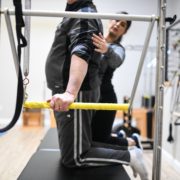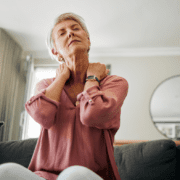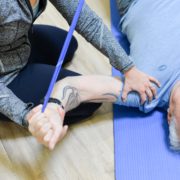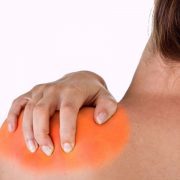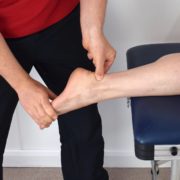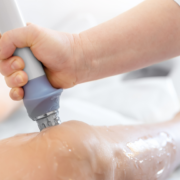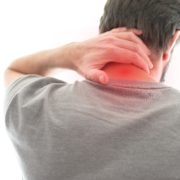5 Ways Working Out Can Aggravate Your Back
The research continues to show that the best “treatment” for back pain is exercise. But for some, a work out is what actually aggravates their back. This is a common frustration I hear from clients. They know that strengthening their core and working out is good for their back. But when they do – they suffer.
Here are five ways your work out is aggravating your back:
1. Misguided Exercise Choice
While the research isn’t wrong about exercising and back pain – not all exercises are appropriate depending on the type and severity of back pain you’re experiencing. For example, walking is considered one of the best activities for back pain sufferers, but for some, it’s excruciating. Strength training and lifting weights should be an essential part of back pain rehabilitation (and prevention). But if it’s done haphazardly, you’re going to have problems and likely aggravate your back. “Exercise” is not what causes problems for most people – it’s exercise choice. And when you make the wrong choice and aggravate your back, you tend to do the worst thing possible – rest and avoid exercise altogether. There is a middle ground when it comes to exercise and back pain. Working with an expert who understands this is essential.
2. Premature Stability Training
Stability training is an important part of back pain recovery – but I often see it introduced too soon. “Mobility before stability” is my mantra. If you don’t have full mobility in your spine, there is a reason, and it must be explored. When your spine doesn’t move well, you risk developing compensatory movement patterns that cause structures in and around your spine to get irritated. You don’t want to stabilize this scenario. You want to restore proper mobility first and then stabilize your spine. I can’t tell you how often I see people making this mistake. When it comes to back pain and working out, mobility-first is a must. If you’ve got a stiff back but have been trying to stabilize it – this could be why your back is getting aggravated when you work out. Stability work has been introduced too soon.
3. Poor Core Activation
Knowing how to properly activate your core is different from having good core strength. You can have the strongest abs in the world – but if you don’t use them when they count – your “6-pack abs” are useless. Knowing how to properly activate your core is essential when you exercise, but especially when you have back pain. If you don’t activate your core properly when you’re lifting weights, or when performing complicated, coordinated movements such as tennis or golf – you’re setting yourself up for injury. The ability to activate your core properly is developed through motor control training. It’s where we teach your mind how to recognize and activate specific muscles, during specific activities, so that it eventually becomes habitual. If you’re constantly having back pain every time you work-out or exercise, it could be that you lack the ability to activate your core properly – and/or when you need it.
4. Poor (or non-existent) breathing technique
Not breathing properly – or not breathing at all – can significantly impact the effectiveness of your exercise routine and impede your ability to perform an exercise properly. As mentioned previously, knowing how to activate your core is crucial when you exercise, and in order to activate your core properly, you must be able to breathe properly. Your deep core is made up of four parts: your deep abdominals, deep back muscles, pelvic floor musculature, and your diaphragm. Your diaphragm is what controls your breathing. Let’s say you hold your breath when you exercise. This means your diaphragm isn’t expanding or contracting, which impacts the other four muscle groups in your deep core. All four muscle groups must work together in order for your core to be functional and strong. Plus – when your diaphragm – or any other muscle group in your deep core can’t work like it should – you get unnecessary pressure and strain on your back muscles. If you’re constantly aggravating your back every time you work out – make sure you’re breathing properly. Or at the very least, not holding your breath.
5. Improper form
Perhaps the most common reason working out aggravates your back is because you’re not using proper form. There’s a lot of people out there who think posture and form don’t really matter. But they do. When you lift weights, for example, you’re adding load to your spine. It’s essential you have good form and technique when your spine is under load or stress. The tricky thing about form, however, is that you can get away with poor form for a time. It might not hurt the first time you lift with improper form – or the fourth – but by your 100th rep – your back will start talking to you. Same goes for body weight exercises. Just because you aren’t adding load to your spine in the form of an external weight, doesn’t mean you can’t still aggravate it by doing the same movement over and over poorly. If you’re going to exercise – and you want to exercise daily – do it with proper form and posture. Otherwise – if you haven’t aggravated your back yet – it’s only a matter of time.
If you’re always hurting your back when you work out – it’s likely due to one of these five reasons.
Get expert help to figure out which one it might be – because at the end of the day – exercise is good for your back – and you don’t want to avoid it or dismiss it when there could be a perfectly reasonable explanation
Are you local to Portsmouth, NH and looking for help?
Consider speaking with one of my specialists – we will ask you all about what’s been going on with you and see if we would be a good fit to help! CLICK HERE to speak with a specialist.
Dr. Carrie Jose, Physical Therapist and Pilates expert, owns CJ Physical Therapy & Pilates in Portsmouth and writes for Seacoast Media group. To get in touch, or request one of her free guides for getting rid of back pain – visit her website www.cjphysicaltherapy.com or call 603-605-0402

